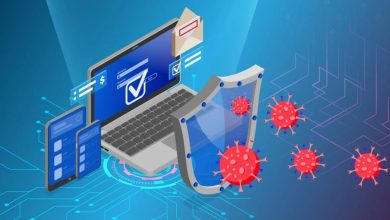Is Quantum Upon Us? Understanding Its Impact on APAC Organisations

For years, we have heard whispers of a future shaped by quantum computing — a technology that promises to redefine everything we know about computing power. Until now, computing power has been the main driver of progress. Yet even today’s fastest supercomputers pale in comparison to the possibilities of quantum computing. By harnessing the counterintuitive laws of quantum mechanics, quantum computers can perform multiple calculations in parallel. The result? Problems that would take classical computers centuries to solve could potentially be solved by quantum machines in seconds.
Dr Avesta Hojjati, VP of Engineering at DigiCert, has witnessed firsthand the seismic shift in interest surrounding quantum computing over the past eight years. “In my time here, I have seen more grants, news stories, opportunities and applications with the keyword ‘quantum’ in them than I have seen in the past eight years combined, and that alone speaks volumes”, he notes.
This explosion of interest reflects a broader trend evident in Asia Pacific (APAC) countries like Singapore, China, Japan and Australia, which are committing significant resources and budgets to quantum initiatives in both industry and academia. This commitment is a testament to their belief in the transformative potential of this disruptive technology.
The Quantum Conundrum: Hype vs Reality

While the potential of quantum computing is undeniably groundbreaking, there are important caveats to consider. As Dr Hojjati aptly points out, “One thing that has to be explained properly is the set of problems that quantum computers are capable of solving. It’s a very, very small set of problems, and they’re very specialised.”
For all its immense power, quantum computing is not a universal solution — it thrives in specific areas. The modelling of cancer cells is a prime example. Quantum computers can drastically reduce the time it takes to simulate and analyse cancer cells, which brings invaluable benefits to medical research. The same applies to weather forecasting, where the predictive capabilities of quantum computers shine. But for many other computational tasks, classical computers are still more efficient and practical.
Not only is quantum computing highly specialised in its applications, but it’s also not exactly within arm’s reach for most businesses or developers. First and foremost, programming quantum computers is anything but simple — it is its own expertise, one that goes beyond traditional coding skills.
The unique nature of quantum mechanics means that programmers have to learn a whole new set of rules. Concepts like qubits, which exist in multiple states simultaneously, require a completely new approach to problem-solving that is not common in classical computer science.
Moreover, compared to the ubiquity of cloud computing platforms like AWS, quantum computing remains far less accessible. As Dr Hojjati insightfully notes, while companies like IBM do offer access to scaled-down quantum machines, these options are still limited. Quantum computing, at least for now, is far from becoming a tool that businesses or individuals can easily tap into.
The Looming Threat
For most organisations, the ROI on quantum computing is still uncertain — many are not yet sure where the real-world use cases will emerge. However, one area where quantum’s impact is undeniable is encryption. The fear of a “Q-day,” the moment when a quantum machine could break today’s encryption standards and decrypt much of the internet’s secure traffic, has governments and industries on high alert. This is perhaps one major reason why governments are investing heavily in quantum research.
When it comes to preparing for post-quantum cryptography, Dr Hojjati acknowledges, “there is a lot of work that needs to be done”. However, he highlights an important breakthrough: the culmination of an eight-year endeavour by NIST has led to the release of new “quantum-safe” algorithms as of August 13th, designed to withstand the threats posed by both quantum and classical computers.
The reality is that we remain in the dark about how quickly we might achieve reliable, scalable quantum computers capable of cracking current encryption algorithms. However, with the advent of NIST’s newly released quantum-safe algorithms, Dr Hojjati is optimistic that guidelines and regulations will emerge to mandate their deployment in scenarios where data is at risk. This includes the protection of personally identifiable information, trade secrets, financial data and other sensitive information.
From an APAC perspective, Dr Hojjati points out that Singapore has taken significant steps in the banking sector as one of the first countries to establish guidelines aimed at protecting financial institutions from potential quantum threats. This proactive approach serves as a model for other countries in the region and underscores the importance of being prepared in the face of emerging technological challenges.
First Steps Towards Quantum Readiness
An intriguing observation from Dr Hojjati is that given the early stages of post-quantum development, currently “nobody is ready”.
He advises organisations in APAC to first get an overview of their data vulnerabilities, and by the end of 2024, these organisations should aim to formulate a strategic plan that addresses potential risks and sets the stage for effective rollout of security measures that will protect user data in the face of quantum advancements.
When it comes to practical steps towards quantum readiness, Dr Hojjati emphasises one fundamental question: “Do I have end-to-end visibility of my cryptographic algorithms and libraries across the organisation?” If the answer is uncertain, then the priority becomes clear—gaining visibility is the first critical step.
He elaborates that before even considering the deployment of post-quantum cryptographic algorithms, organisations need to have a complete view of what’s truly at risk — what systems or data could be compromised and what holds the most value. Only then can they start thinking about the performance impacts and whether their applications and devices are equipped to handle the new algorithms.
Preparing for a Quantum Future
As the conversation came to a close, Dr Hojjati offered a reminder of how quickly things can change in the tech world, recalling that post-quantum security was a low priority up until August, but has now become a critical focus for organisations everywhere.
He was quick to address a common misconception, stating that “contrary to public belief, quantum computers are ready. Quantum computers are real, and the set of problems that they’re going to solve is going to either impact us negatively or positively.”
Nevertheless, he believes that “Asia Pacific by itself, I think is one of those regions that has quickly recognised that quantum could be both useful and cause a threat, and they (the APAC countries) have jumped on this train to make sure that they can both innovate and protect themselves in the next few decades that are ahead of us in the era of quantum computing”,
This recognition of the dual potential of quantum technology highlights a proactive stance, with countries in the region investing in both innovation and security measures to navigate the complexities of this evolving landscape.




